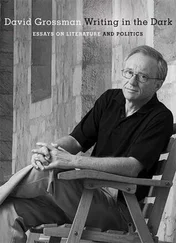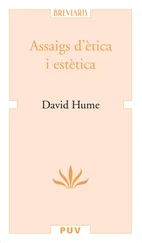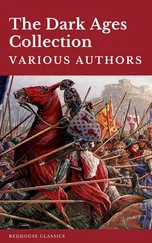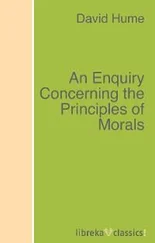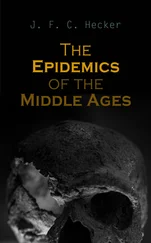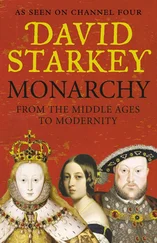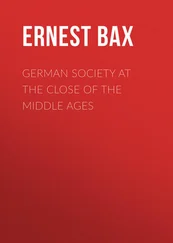But, while the Arian heresy in itself led to no permanent schism in the Church, 3new and closely related controversies soon agitated the eastern world and were destined to issue in lasting divisions. Once the divinity of Christ in the fullest sense was universally admitted, the question ensued how the union of his divine substance with his human nature is to be conceived. Was the Godhead mixed with humanity, or only conjoined? Did Mary bear the flesh only or the Logos along with the flesh? Did Christ’s human nature survive the Resurrection? In the fourth century, there was no definite doctrine, but the problem was disturbing the minds of some metaphysical theologians.
Apollinaris of Laodicea argued that the union of a perfect God into a perfect man was out of the question. For the result of such a union would be a monster, not a uniform being. He concluded that Christ was not a perfect man, and that he adopted human nature, determining it in such a way that it did not involve free will, which would be inconsistent with his Godhead. His flesh was taken up into the nature of the Logos and was thus divine, and the Logos shared in the sufferings of the flesh. Further, Christ’s mind was not human; for, if he had had a human mind, he would have had a duplicate personality.
It has been said that this theory of Apollinaris expressed the belief entertained at heart by all pious Greeks. 4But it was clear that it did not do justice to the humanity of Christ as depicted in the Gospels, and other theologians, who like Apollinaris himself belonged to the school of Antioch, sought to render intelligible the union of a perfect God with a perfect man. According to Theodore of Mopsuestia, the union of the two natures was a contact which became more intimate at each stage of human growth, and the indwelling of the Logos in the man was not substantial, but of the same order as the indwelling of God, by grace, in any human being. Each nature was itself a person, and the Logos did not become man. It was the man only who suffered. And Mary was not, in the strict sense, the mother of God.
In the reign of Theodosius II this insoluble problem raised a bitter controversy, which agitated the eastern world. When Sisinnius, Patriarch of Constantinople, died at the end of A.D. 427, the bishops, the clergy, and the monks could not agree on the appointment of a successor, and the nomination was committed to the Emperor; who, seeing that no possible candidate among the ecclesiastics of Constantinople would be generally acceptable, chose Nestorius, 5a monk of a convent at Antioch, who had a high reputation as a preacher. The eloquence of Nestorius was matched by his intolerance, and no sooner was he seated on the Patriarchal throne 6than he began an energetic campaign against heresies. But his forcible language in condemning Apollinarian views, which he discovered to be rife among the local clergy, soon gave the Patriarch of Alexandria, who was the natural enemy of any Patriarch of Constantinople, a welcome opportunity of accusing him of heresy himself. The rivalry between these great sees, bitter since the Council of A.D. 381, when precedence over all sees except Rome had been granted to New Rome, 7had been aggravated by the struggle between Theophilus and Chrysostom.
The Patriarch Cyril and the Alexandrines held that the two natures of Christ were joined in an indissoluble, “hypostatic” or personal union, yet remained distinct, but that the human nature had no substance independently of the divine; that the Logos suffered without suffering, and that Mary is the mother of God inasmuch as she bare flesh which was united indissolubly with the Logos. Cyril’s doctrine approached that of Apollinaris in so far as it denied the existence of an individual man in Christ, but was sharply opposed to it by its maintenance of the distinction of the two natures.
Nestorius leaned to the doctrine of Theodore of Mopsuestia, which was popular in Syria. He characterised as fables the statements that a God was wrapped in swaddling clothes and was nailed upon the cross, and he protested against the use of the designation “Mother of God” (Theotokos).
It is to be observed that in this controversy both parties agreed in condemning the theory of Apollinaris and in holding that there were two natures in Christ. The main difference between them concerned the formula by which the union of the two natures was to be expressed — Cyril maintaining a “natural union” 8and Nestorius a less intimate “contact.” 9The truth may be that the view of Nestorius was not so very different from that of Cyril as Cyril thought. It seems probable that the doctrine of two Persons, somehow joined together, which is commonly imputed to Nestorius, would have been repudiated by him. 10Cyril wrote to Theodosius, to Eudocia, to Pulcheria and her sisters, censuring the heretical opinion of Nestorius, 11and stirred up the Egyptian monks, who were ever ready for a theological fray. A heated correspondence ensued between the two Patriarchs, and both invoked the support of Celestine, the bishop of Rome. Pope Celestine was no theologian. He was guided by the political expediency of supporting Alexandria against Constantinople, and he evaded the real issue by bringing into the forefront of the controversy a minor point, namely the question whether Mary might properly be called the Mother of God. On this particular point Nestorius was ready to yield, but he would not recant his doctrine at the bidding of a Roman synod. 12Anathemas and counter-anathemas flew between Alexandria and Constantinople, and then the Emperor, by the advice of Nestorius, summoned a Council on the neutral ground of Ephesus for Whitsuntide A.D. 431. The two antagonists arrived in good time, but John the Patriarch of Antioch was three weeks late. Cyril, who was accompanied by fifty bishops, would not wait for him; and the supporters of the Alexandrian party met and decreed the deposition of Nestorius, who refused to attend the assembly. When John and the Syrian contingent arrived, a rival but far less numerous Council was opened; the commissioner Candidian, Count of the Domestics, who represented the Emperor, presided; and Cyril was condemned and deposed. Then the Roman legates appeared upon the scene, attended the assembly of Cyril, and signed the decree against Nestorius.
The shameless proceedings of the satellites of Cyril and the rabble whom they are collected are graphically described by Nestorius, whose house was guarded by soldiers to protect him from violence. “They acted in everything as if it was a war they were conducting, and the followers of the Egyptian and of Memnon (the bishop of Ephesus), who were abetting them, went about in the city girt and armed with clubs, men with high necks, performing strange antics with the yells of barbarians, snorting fiercely with horrible and unwonted noises, raging with extravagant doings, carrying bells about the city, and lighting fires in many places and casting into them all kinds of writings. Everything they did was a cause of amazement and fear; they blocked up the streets so that every one was obliged to flee and hide while they acted as masters of the situation, lying about drunk and besotted and shouting obscenities.” 13Such were the circumstances of the Third Ecumenical Council, which had gathered to pronounce on the true doctrine of the natures of Christ.
The Emperor had at first resolved to reject the decree against Nestorius, but afterwards he decided to carry out the rulings of both assemblies. The two Patriarchs were deposed; Nestorius retreated to his old convent at Antioch. But at Constantinople there was a strong ecclesiastical opposition to Nestorius; the clergy addressed a petition to the Emperor demanding justice for Cyril, and the monks, under the leadership of Dalmatius, excited the people. 14The popular demonstrations were aided by Cyril’s intrigues and a lavish distribution of bribes; 15Pulcheria doubtless threw her influence into the scale; and the Emperor was compelled to yield and to permit Cyril to resume his Patriarchal seat. Cyril then sought to come to terms with Antioch, and a new formula was invented — “the unconfused union of two natures” — which could be accepted both by the Alexandrines and by moderate men of the Antiochian school. Cyril subscribed to this creed in A.D. 433. Good Nestorians retreated to Edessa, and here their theology was in the ascendant until the Emperor Zeno (A.D. 489) took measures to extirpate Nestorianism and succeeded in driving it beyond the frontier. The subsequent fortunes of the sect are connected with Persian and Saracen history.
Читать дальше

